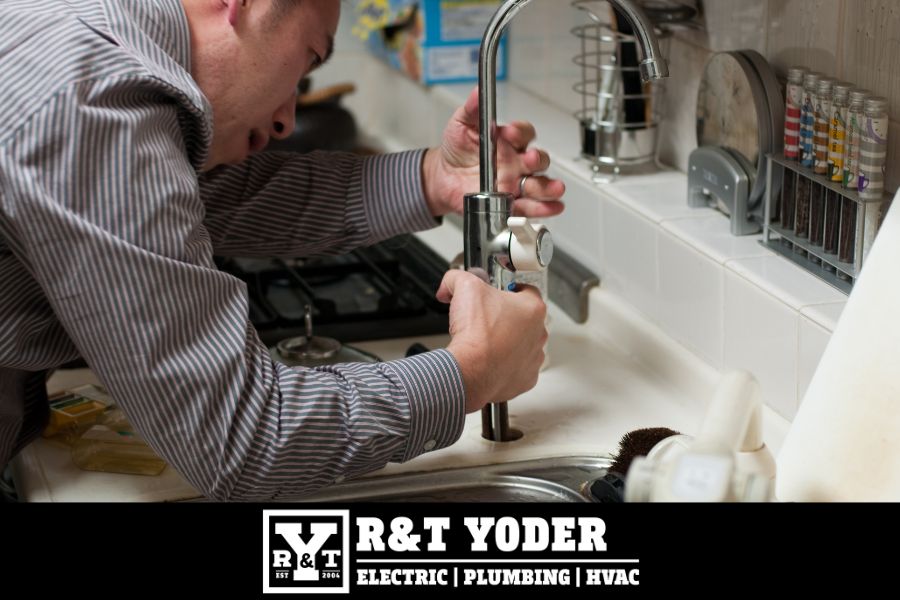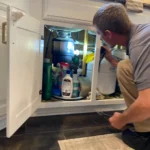Water leaks, gas leaks, or hidden plumbing issues can cause extensive damage and lead to costly repairs if left undetected. Whether you’re dealing with a small drip behind a wall, a hidden slab leak, or a gas line issue, professional leak detection is crucial for identifying problems accurately and efficiently. But how much does leak detection cost, and what factors influence this expense?
1. What Is Leak Detection?
Leak detection is the process of locating and identifying leaks in water pipes, gas lines, sewer systems, or plumbing infrastructure. Because many leaks occur in concealed areas—such as behind walls, under floors, or within foundations—specialized techniques and tools are required to pinpoint their exact location.
Leak detection can be applied to various types of systems, including
- Residential Plumbing: Leaks in water pipes, toilets, faucets, and fixtures.
- Commercial Systems: Complex networks in offices, restaurants, and industrial facilities.
- Gas Lines: Identifying leaks in natural gas or propane systems.
- Sewer Systems: Finding leaks or blockages in sewer lines and drains.
Professional leak detection services ensure accurate identification of leaks with minimal disruption to your property.
2. How Much Does Leak Detection Cost?
The cost of leak detection varies based on several factors, such as the type of leak, the complexity of the system, the detection method used, and the location. On average, you can expect to pay
- Residential Leak Detection: $150 to $500
- Commercial Leak Detection: $300 to $1,500 or more
- Gas Leak Detection: $200 to $600
- Slab Leak Detection: $300 to $800
These prices are general estimates and may vary depending on your region, the severity of the leak, and the accessibility of the affected area.
2.1 Cost Breakdown by Leak Type
- Water Leaks:
- Cost: $150 to $500
- Common Locations: Pipes behind walls, under sinks, or in ceilings.
- Slab Leaks:
- Cost: $300 to $800
- Description: Leaks occurring under the concrete foundation of a home or building.
- Gas Leaks:
- Cost: $200 to $600
- Description: Leaks in natural gas or propane lines.
- Sewer Line Leaks:
- Cost: $250 to $1,000
- Description: Leaks or blockages in underground sewer pipes.
- Swimming Pool Leaks:
- Cost: $200 to $1,000
- Description: Leaks in pool plumbing, liners, or filtration systems.
3. Factors That Affect Leak Detection Costs
Several factors influence the overall cost of leak detection. Understanding these factors can help you anticipate potential expenses and make informed decisions.
3.1 Location of the Leak
The harder the leak is to access, the more expensive the detection process will be. For example
- Visible Leaks: Easier to detect and cost less.
- Hidden Leaks: Leaks behind walls, under floors, or in the foundation require specialized tools and more time, increasing costs.
3.2 Type of Leak
- Water Leaks: Typically cost less than gas or slab leaks due to simpler detection methods.
- Gas Leaks: Require immediate attention and specialized equipment, increasing the cost.
- Slab Leaks: Involve complex detection under concrete, making the process more time-consuming and expensive.
3.3 Detection Method Used
Different detection methods come with varying costs due to the tools and expertise required. Common methods include
- Acoustic Leak Detection:
- Cost: $200 to $500
- Description: Uses listening devices to detect sounds from leaks.
- Thermal Imaging:
- Cost: $300 to $600
- Description: Detects temperature variations caused by water leaks using infrared cameras.
- Video Pipe Inspection:
- Cost: $250 to $1,000
- Description: Uses cameras inserted into pipes to visually inspect for leaks or damage.
- Smoke Testing:
- Cost: $200 to $500
- Description: Injects smoke into the plumbing system to detect leaks or blockages.
- Pressure Testing:
- Cost: $150 to $400
- Description: Checks the pressure in pipes to identify leaks.
3.4 Severity and Size of the Leak
- Minor Leaks: Smaller leaks may be easier and quicker to detect, lowering costs.
- Major Leaks: Extensive or multiple leaks may require more time and effort, increasing costs.
3.5 Property Type
- Residential Properties: Typically less expensive due to simpler plumbing systems.
- Commercial Properties: More expensive due to larger and more complex systems.
3.6 Emergency Services
- After-Hours Services: Leak detection performed at night, on weekends, or holidays may incur additional fees, typically $100 to $300 extra.
- Urgent Repairs: Immediate response for severe leaks may also increase costs.
3.7 Regional Pricing
Costs can vary based on your location and the cost of living in your area. Urban areas may have higher prices compared to rural regions.
4. How Is Leak Detection Done?
Professional leak detection uses a variety of advanced techniques and tools. Here are some commonly used methods
4.1 Acoustic Leak Detection
How It Works: Uses sensitive listening devices to detect the sound of water escaping from pipes.
Best For: Underground pipes, walls, and hidden leaks.
4.2 Thermal Imaging
How It Works: Infrared cameras identify temperature differences caused by water leaks.
Best For: Detecting leaks behind walls, floors, or ceilings.
4.3 Video Pipe Inspection
How It Works: A waterproof camera is inserted into the pipes to provide a visual inspection.
Best For: Sewer lines, drainpipes, and underground plumbing.
4.4 Smoke Testing
How It Works: Non-toxic smoke is pumped into the plumbing system to reveal leaks or cracks.
Best For: Detecting leaks in sewer lines and ventilation systems.
4.5 Dye Testing
How It Works: A colored dye is added to the water system to trace leaks visually.
Best For: Toilets, pools, and visible plumbing fixtures.
5. Why Is Professional Leak Detection Worth the Cost?
Hiring professionals for leak detection offers several advantages
5.1 Accuracy and Precision
Advanced tools and techniques ensure accurate detection, reducing unnecessary repairs.
5.2 Minimal Damage
Non-invasive methods prevent the need for destructive exploratory work.
5.3 Time Efficiency
Professionals can locate leaks quickly, minimizing downtime and inconvenience.
5.4 Cost Savings
Early detection prevents minor issues from escalating into major, costly repairs.
5.5 Safety
Professional detection ensures safety, especially for gas leaks or structural concerns.
6. Tips to Prevent Leak Issues and Save Money
Preventing leaks can help you avoid costly detection and repairs. Here are some practical tips
- Regular Inspections: Schedule annual plumbing checks.
- Monitor Water Bills: Unexpected spikes may indicate a leak.
- Check Appliances: Inspect washing machines, water heaters, and dishwashers.
- Maintain Pipes: Insulate pipes to prevent freezing and bursting.
- Install Leak Detectors: Use smart leak detectors for early warnings.
Understanding how much leak detection costs and the factors that influence pricing helps you prepare for potential plumbing or gas line issues. The cost of professional leak detection typically ranges from $150 to $1,500, depending on factors like leak location, type, and detection method.
Investing in timely leak detection not only saves money in the long run but also protects your property and ensures safety. By hiring professionals and taking preventative measures, you can maintain a leak-free and efficient home or business.











